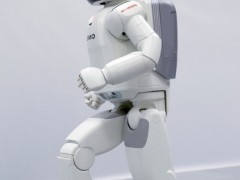While the latest craze for artificial intelligence (AI) has sparked another wave of investment to build humanoid robots, existing prototypes are mostly clumsy, inflexible, and better at performing on stage than in real life. However, that hasn't stopped a handful of startups from persevering. The full report is as follows:
Huge market
Jonathan Hurst, co-founder and chief robotics officer of Agile Robotics, asked, do we really need humanoid robots? Hurst deliberately describes Agile Robotics' warehouse robot, Digital, as human-centered rather than humanoid; The difference between the two obviously emphasizes what it does, rather than what it is.
At present, its job is to lift and carry heavy objects. Amazon announced in October that it would begin testing the use of warehouse robot "Digital" in its warehouses; Agile Robotics opened a factory in Oregon in September to mass-produce the robot.
The warehouse robot is "digital," with a head containing cameras, other sensors, lifelike eyes, and a torso that functions as an engine. It also had two arms and two legs, but its legs were more bird-like than human-like: it had a knee that was bent backward like something called a toe-moving object (such as birds, cats, and dogs, which walk on toes rather than flat feet).
Rival robot manufacturers, such as "humanoid" AI companies, are taking a purer approach, arguing that only truly humanoid robots can effectively navigate workplaces, homes and societies built for humans. Humanoid AI also plans to start with relatively simple applications, such as retail warehouses; But the long-term goal is to build a commercial robot that can "iterate like an iPhone," doing a variety of jobs and taking on human tasks as the global birth rate declines.
Brett Adcock, CEO of Humanoid AI, said: "There are not enough people to do these jobs, so the market is huge. If we can build humanoid robots to do jobs that humans don't want to do because of a shortage of manpower, we can sell millions, if not billions, of them."
Rapid development
At the moment, however, Adcock's company does not have a prototype robot for the market. Founded just over a year ago and raising tens of millions of dollars, the company recently released a 38-second video of a "humanoid" robot walking through the company's testing facility in Sunnyvale, California.
Tesla CEO Elon Musk is also using its robotics division to build a humanoid robot called Optimus Prime; But an exciting live demonstration last year, showing the robot's clumsy, stuttering steps, did not impress robotics experts. One company that seems to have gone a step further is Tesla's Austin, Texas, neighbor Aptronick, which debuted the Apollo humanoid robot in an online video in August. The effort and money invested in building clunky humanoid robots can make an entire enterprise seem like a hobby for wealthy technologists; But for some foot robot pioneers, it's about learning along the way.
Marc Raibert, co-founder of Boston Dynamics, best known for his "Spot" robot dog, said that sometimes the road to development is not smooth. Boston Dynamics, now a subsidiary of the automaker Hyundai Group, has experimented with a humanoid robot that can carry boxes. "That led to the development of a new robot, not actually a humanoid robot, but a robot with some of the characteristics of a humanoid robot," Raibert said via email. But these changes have led to a new class of robots that can move boxes faster, work longer and operate in tight Spaces such as trucks. So humanoid robotics research has led to a useful non-humanoid robot."
Some startups aiming to develop human-like machines are focusing more on improving the dexterity of robot fingers before trying to make robots walk.
exciting
Jody Ross, co-founder and CEO of Temple AI, a startup based in British Columbia, Canada, says walking is not "the hardest problem for humanoid robots to solve." The most difficult problem to solve is the ability to understand the world and operate with your hands."
Temple AI's latest and first bipedal walking robot, Phoenix, can stock shelves, unload delivery vehicles and operate checkout counters, an early step toward what Rose sees as a longer-term goal: making robots perceive the real world so they can reason in a way that looks like intelligence. Similar to other humanoid robots, this means it looks cute because the way it interacts with real people is its main function.
Ross said, "We want to be able to supply the world with labor, not just for one thing, but for everyone who needs it." These systems must be able to think like people. Therefore, we can call it general AI. But those systems have to be able to understand speech, and they have to be able to translate that understanding into action to meet the demand for jobs across the economy."
Agile Robotics' "digital" robot has caught Amazon's attention because it can walk and move around in a certain way, complementing the e-commerce giant's current fleet of robotic buggies responsible for moving large carts around its vast warehouses.
Right now, "digital" robots are being tested for repetitive packing and handling jobs. But the mere introduction of robots is bound to raise concerns that they could replace humans; Amazon is trying to prevent this narrative from taking root.
Damien Shelton, co-founder and CEO of Agile Robotics, said warehouse robots are just "the first use case" of a new generation of robots; As such robots prepare to enter businesses and homes, Shelton wants them to be welcomed rather than feared.
"So in 10, 20 years, you'll see these robots everywhere. It's very exciting that human-centered robots will be a permanent part of human life."


